Seamless communication of loading requirements for seamless transportation
No scattered data, no unclear free texts — with Loady, shippers, freight forwarders and goods recipients can access a centrally networked, up-to-date and standardized data source at any time. This ensures that deliveries in the supply chain remain smooth, without misunderstandings or manual queries.

Shippers, logistics service providers and goods recipients use Loady together as a central data source for transport requirements
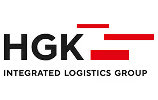
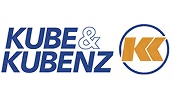
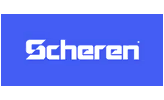
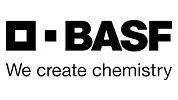





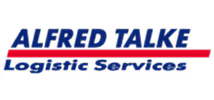
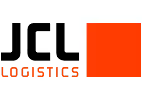











Missing or inaccurate loading requirements slows down logistics on a daily basis
Loading requirements are often outdated, scattered, and inconsistent. Because everyone involved works with different data, information has to be laboriously coordinated by telephone or e-mail.
The reason: Standardized, centrally available, and always up-to-date data is missing for all stakeholders.
Challenging and often 1:1 coordination between shippers, consignees, carriers and drivers.
Delayed or rejected trucks at gates or ramps result in lost loading slots and waiting times.
Operational inefficiencies reduce planning accuracy, drive up costs, and lead to unnecessary CO₂ emissions.
With Loady, all parties involved have access to a uniform, always up-to-date data source
Imagine, from order creation to arrival at the ramp, everyone has the right information at the right time. No follow-up, no misunderstandings — simply smooth processes for shippers, freight forwarders and drivers.
No unclear free texts — thanks to a standardized data model
The Loady data model is built to support supply chain logistics across industries – especially those with complex requirements. It offers standardized fields for all key data needed to procure, plan, dispatch, and execute transports of liquid, bulk, and packaged goods.

Central and synchronized data — always up to date, without manual reconciliation
All changes to transport requirements are synchronized in real time and are historically traceable. This means that dispatchers, drivers and logistics partners always work with the latest information. Customers and sales staff save themselves the hassle of manually filling out and keeping track of forms — there is also no need to send PDFs and update emails.

User-specific online views
The specific data sets with loading requirements for individual transports are available as multilingual, easy-to-understand online views for dispatchers and drivers. They provide essential support for planning, scheduling and delivery.

Not every user has access to all data. In Loady, data owners can specifically release loading requests for individual shipments for freight forwarders — securely and as needed.

Geolocations
The integrated map functionality makes it easy to record geocordinates of all relevant elements and use them, enriched with information from Loady.

Multilingualism
Charging requirements, safety requirements, and instructions are available in multiple languages so dispatchers and drivers understand everything. Click here to see all available languages.
The right function for every area
From order to delivery — Loady offers all relevant functions for seamless logistics and reduces coordination efforts to a minimum.
Freight tender
With Loady, freight tenders can be created quickly and easily, without manual searching and tedious reconciliation of requirements. All logistics specifications are structured and standardized so that freight forwarders work directly with the right information. This ensures more precise allocation, prevents misunderstandings and makes time-consuming contract renegotiations superfluous.
Once awarded, freight forwarders with a Loady subscription can continue to view the data or integrate it into their systems.
The integration of data with freight purchasing and tendering platforms reduces manual effort and increases the quality of the purchasing process.
Pre-load restrictions
Not all goods can simply be loaded — incorrect orders or material incompatibilities can cause safety risks, product contamination or even legal violations. With Loady, you define pre-loading restrictions in a structured and comprehensible way, so that freight forwarders and drivers always know exactly what is allowed — and what is not.
Clear guidelines prevent breaches of safety and transport requirements.
No risk of shippers, carriers and drivers working with different or outdated rules.
Pre-load restrictions can be integrated into the electronic cleaning certificate or yard management system for the check.
Easy to understand driver instructions
With Loady, truck drivers receive easy-to-understand instructions in their language, which they can follow step by step and which are tailored precisely to the specific delivery or collection situation.
By QR code or link: No paperwork, no delays, immediately available.
Available in English, Polish, Spanish, French, Italian & Romanian. Available soon: Russian, Bulgarian, Hungarian and Czech.
KRITIS compliant documentation for site operators
View for truck drivers
While driving or before unloading, drivers need to know what specific requirements apply to their transportation. The Loady driver view provides all relevant transport and safety requirements — directly on the device, clearly and up to date.
By QR code or link: No paperwork, no delays, immediately available.
Available in English, Polish, Spanish, French, Italian & Romanian. Available soon: Russian, Bulgarian, Hungarian and Czech.
transportation management
Uniform, consistent information on charging requirements, product specifications, location rules, and required equipment reduces the costs of data management and inquiries in transport management. Simple, digital communication with freight forwarders without media breaks between ERP, TMS, customer portals and freight forwarder software ensures fewer incidents and delays, fewer lost loading slots and better use of available resources. The direct synchronization of charging information enables a better response time, even in the event of changes.
Fewer emails, Excel spreadsheets, manual comparisons with freight forwarders or customers mean logistics teams have more time for operational management and value-adding activities
The digital transfer of loading and product information enables automated scheduling and TMS processes. And better planning of time windows and ramp bookings

Truck handling
Truck handling and turnaround times at an industrial location benefit from a central data hub such as Loady because it systematically eliminates information gaps, manual errors and coordination problems. Through uniform charging information and automated access to current location requirements, errors and waiting times are avoided and the ability to plan transports increases — as does efficiency at gates and loading points. Overall, the total time that a truck spends at a location is reduced. The potential for frustration decreases while the workload of trucks and personnel increases.
Possible use of data from Loady for checklists for manual or automated (pre) reconciliation - even for liquid transport for equipment and electronic pre-product check
Integration with yard management systems
Multilingual driver instructions support interaction with drivers

We can help you to identify and calculate your benefit case in a few days. This will show you the savings potential of Loady for your company — with real figures and a clear ROI assessment for a well-founded decision.
Explore Loady
Industry solutions
Logistics in all industries benefits from clear information and seamless digital collaboration.

Connect Loady to your business processes
Loady fits directly into existing ERP, TMS, yard, eCommerce, procurement and telematics systems, so that all charging requirements are automatically available in its own corporate and logistics systems.
Support as needed
We'll guide you through the onboarding process and, with introductions and best practices, ensure that your team is quickly trained and can take action. If necessary, we can help you create and update data sets in Loady.
That's what our
customers say about Loady
Ready to take the next step?
Book a demo or start for free.
Get in touch with us
Ask all questions and get an idea of the potential for logistics processes in your company.

Create your site and share data - it's free of charge!
Set up your site in just a few minutes and share your general site information directly with suppliers and logistics partners - it's free of charge.
Clear indications, fewer clarifying questions, greater efficiency!
Frequently asked questions
Loady is a central, cloud-based data hub for loading and unloading requirements along the transport chain. It provides standardized information on how to load or unload certain products at industrial sites.
It answers questions like: What are the openning hours and closing days? What technical equipment is provided - and what needs to be brought by the carrier? What are the safety instructions and what personal protective equipment is needed? What does the driver need to know to manage himself at the site? Is slot booking required and if so: who needs to book the slot and how? - etc.
The collaborative approach of Loady makes it possible to share data from a single source of truth. So the parties involved in a transport use the same data set and get any updates directly in their systems: suppliers (shippers), their customers (consignees) and freight forwarders, including their subcontractors and drivers.
- Central management of loading and unloading requirements from customers, suppliers, external warehouse logistics
- data synchronization
- Management of pre-loading restrictions for liquid and bulk goods and electronic pre-check
- Transport planning and scheduling with exact information and requirements, including geocoordinates
- Ordering and digital transfer of loading information to freight forwarders
- Multilingual, digital instruction for truck drivers (with proof required)
- Checklists for truck handling and automation
- Preparation of loading specifications for freight tenders
- Location and ramp data: address, geographical coordinates, opening hours and closing days, safety requirements, vehicle restrictions, registration and procedures, existing infrastructure for drivers)
- Equipment requirements (hoses, couplings, cleanings, load securing, etc.)
- Admission requirements (e.g. PPE, training, documents, qualification requirements)
- Loading behavior and loading options (e.g. top/bottom loading)
- Specific product information (temperature, safety data sheet, restrictions on previously loaded products)
- Multilingual driver instructions
ERP, TMS or Yard Management Systems plan or carry out transports or manage the arrival and dispatch of trucks. They are operational applications and generally do not contain complete and structured loading and unloading requirements. However, since they need them for the operations they support, they require an additional creation of master data in the respective systems.
Particularly when it comes to the unloading requirements of customers (goods recipients), shippers usually have free descriptive texts or linked PDF files that offer few digital uses (e.g. “Information for Freight Forwarders”, “Business Partner Information”, “Site Rules and Directions”). In addition, this information is only available within the respective application and is generally handled by companies as a separate, proprietary data silo, which poses the major challenge of reactively and manually following up on updates to the data.
Loady fills exactly this gap by providing a central, standardized data source that can be used by all systems via interfaces and thus provides targeted support to various users throughout the logistics process.
Loady offers standardized REST APIs and integrations for:
- ERP systems
- Transport Management Systems (TMS)
- Yard Management Systems
- e-Procurement solutions and freight platforms
- Customer portals / B2B e-commerce
- Freight forwarding software and telematics applications
Loady follows a role-based governance model and ecosystem approach:
- Site managers maintain location data.
- Loading Ramps and Road Managers Maintain Specific Requirements at Their Loading Point, including for the various products
- Product managers maintain specific requirements for transporting their products
- Manufacturing companies/shippers can manage their customers' unloading information in their own area as “business partners.”
- Customers/goods recipients can directly activate their suppliers to use their unloading information and synchronize it with them when changes are made
- External warehouse logistics operators can directly activate their customers to use their loading and unloading information and synchronize it with them when changes are made
- Carriers can receive information from their customers and provide feedback as needed, but cannot change the data themselves.
All changes are traceable, versioned and auditable.
Loady is GDPR-compliant and is based on a secure, cloud-based architecture model with:
- Roles & rights management
- Encryption
- Access logging
- Hosting in certified European data centers
Loady is a platform for managing and sharing master data.
Loady has a SaaS licensing model and is based on an annual subscription. This depends on the role of tany (shipper, goods recipient, external warehouse logistics or freight forwarder) and whether the APIs are used or not.
Loady is licensed in a scalable pricing model based on the number of objects that are managed in Loady.
Loading points, products and driver instructions are chargeable. There is also a modular approach for certain functions, e.g. to support freight tenders. Depending on the setup, a start is possible within a few weeks — including training, data import and system connection.








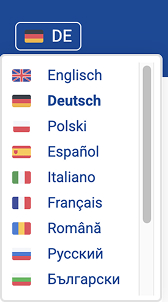











.avif)


.avif)
.avif)
%202.avif)









